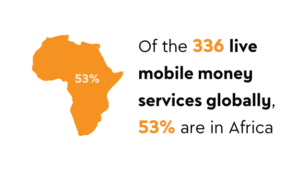South Africa’s economic growth has been, and will continue to be, closely linked to the future of the mining industry, which is the third-largest sector in the country’s economy. It accounts for some 8% of GDP.
The Department of Mineral Resources (DMR) in South Africa believes that mineral beneficiation has become one of the major drivers to advance the empowerment of previously disadvantaged South Africans. Beneficiation occurs when a mined mineral or material is transformed to a more finished and higher-value product for the local or export market – and the state is busy legislating it.
South Africa’s Chamber of Mines (COM) says the amount of downstream beneficiation already occurring in the country is significantly underestimated. The COM conservatively estimates that it creates some ZAR300 billion in value and more than 150 000 jobs. Side-stream beneficiation accounts for around 19% of the country’s GDP and creates 1.3 million jobs.
Nearly 100% of South Africa’s cement and building aggregates, and 80% of the country’s steel, are made locally, the latter from iron ore, chrome, manganese and coking coal mined in-country using furnaces that are 95% powered by electricity from coal-fired power stations. More than 30% of liquid fuels are produced within South Africa from locally mined coal, and 95% of electricity is generated by power plants that use coal mined in the country. Most domestic chemicals, fertilisers, waxes, polymers and plastics are fabricated using minerals and coal mined in South Africa. Some 13% of the world’s platinum catalytic converters are made in the country.
Despite this, the DMR believes South Africa could increase the level of beneficiated mineral output further. Government has put policies in place, some of which are not yet fully finalised, to further implement beneficiation, including the Beneficiation Strategy.
While delivering the Department of Trade and Industry’s budget vote in mid-2014, Minister Rob Davies said that although government has spoken about mineral resource beneficiation for several years, action remains elusive.
‘If we fail to decisively pursue beneficiation, we will relegate the South African economy to a place at the bottom end of the globalisation of labour, with serious consequences for our ability to generate income and employment,’ he said.
‘We do not have the luxury of debating whether to beneficiate our mineral wealth. We must harness the collective industrial capabilities of South African firms to map how to beneficiate and what enabling policies or support measures are required to ensure this happens successfully and for the benefit of all South Africans,’ he said.
Mineral beneficiation has become one of the major drivers to advance the empowerment of previously disadvantaged South Africans
De Beers, in its Diamond Insight Report 2014, notes that in recent years, producing countries such as Botswana, South Africa and Namibia have been striving for increased domestic beneficiation. The continuing trend towards in-country beneficiation of diamonds saw perhaps its largest milestone yet in 2013, when De Beers’ moved its Global Sightholder Sales to Botswana.
‘De Beers is at the forefront of beneficiation in terms of any mining company,’ says Kevin Goodrem, the company’s vice president of beneficiation. ‘We believe that we must give back to the countries where we operate as much as we possibly can, as the mineral wealth is theirs to be exploited. De Beers has always been at the forefront of trying to forge, where possible, linkage to the government.’
In Botswana, the company operates as a private-public partnership (PPP) – one of the most successful in the world, according to Goodrem – giving some 81% of its revenue generated from diamond mining in the country back to Botswana.
Goodrem says De Beers sorts and values diamonds in the countries where they are extracted. ‘We try and encourage beneficiation wherever possible where we operate, as long as it doesn’t destroy value to the consumer at the end of the day,’ he says. ‘We’ve been able to do that in the Southern African context in a way that is sustainable. So in Botswana, we have created 450 highly specialised jobs in sorting the product as it comes out of the ground.’
Moving the aggregation and sales functions from London to Botswana has created a further 185 jobs, while 3 700 people are employed on the cutting and polishing side, through sightholder companies. This is the largest manufacturing sector in Botswana.
‘We’ve estimated that from this you get about three times as many people involved in the service industry, so we’re looking at about 12 000 people in that sector. There are about 90 000 people here [in Botswana] living off the beneficiation strategy. It has a big impact on the economy of Botswana and is something we are proud of. And it is sustainable, which is fundamental.’
Botswana currently does not have beneficiation laws, but encourages companies to consider it. ‘If you legislate something like beneficiation, the sustainability of that is questionable. If commerce believes it to be beneficial both fiscally and morally they would be doing it already,’ he says.
Goodrem believes that while the South African government’s reasons for legislating the process are admirable, the wrong outcomes are being achieved.
‘Certainly we are struggling in terms of the cutting and polishing sector in South Africa because of it. I think governments have to be very careful when writing legislation because of the potential outcomes.
‘People will look at their business and see how much money they’re making, and then look at the environment in which they are operating. If it becomes too complex and difficult to do business there then they’ll look elsewhere. At the end of the day, there’s a commercial element to it and I think government forgets that,’ he says.
‘We believe that we must give back to the countries where we operate as much as we possibly can as the mineral wealth is theirs’
For the last 10 years, Sasol has been involved in the development of Mozambique’s natural gas production industry, and the monetisation of the country’s natural resources. The Central Térmica de Ressano Garcia (CTRG) power plant is a partnership between Electridade de Mozambique (EDM) and Sasol. EDM holds a 51% stake, while Sasol has the remaining 49%. The plant was officially opened in October 2014.
‘Sasol has long maintained its commitment to partnerships,’ says Alex Anderson, the head of group media relations at the company. ‘In this case we have, and continue to be, committed to our partnership with the government of Mozambique [to help] achieve their aim of responsible development of the country’s resources.’ Sasol and its partners have spent US$3 billion on this project thus far, including developing and expanding the CPF and natural gas fields in southern Mozambique and constructing a cross-border pipeline.The Mozambican economy, one of the fastest-growing in Africa, sees its electricity demand increase by 14% year-on-year.
This new, 175 MW power plant is its first permanent, large-scale, gas-to-power facility and will supply electricity to more than two million Mozambicans. This equates to 23% of the country’s current demand.
The Sasol-operated central processing facility (CPF) in Temane in the Inhambane province will supply the power plant with natural gas.
Anderson says that CTRG benefits both Mozambique and South Africa, while also serving to strengthen regional co-operation and integration. ‘For Mozambique, the investment has further served to unlock the country’s natural wealth, and has also served to bring about much needed foreign investment, economic growth, skills and social development,’ he says.
Other advantages include the creation and growth of domestic businesses as well as small- and medium-scale industries; increased employment across the country, especially in the less-developed provinces; and infrastructure growth to support expanded economic activities.
In Mozambique, beneficiation is not mandated. However, the principal players are pressed to consider value-addition initiatives, because the government itself is under internal and external pressure to do the same.
‘Mozambique’s proposed Gas Master Plan prioritises the development of electricity, gas-to-liquids and fertiliser plants – all areas where we have proven expertise,’ says Anderson.
‘As Sasol, we believe we are well-positioned to continue to unlock Mozambique’s resource potential based on our track record with partners, competitive technology and market position in the region. We have the ability to develop and commercialise technology at scale to produce the fuel and high-value chemical products that are at the heart of our integrated value chain.’
In-country beneficiation can certainly be successfully managed, with all parties benefiting equally, though there is much to be considered if adverse results are to be avoided.
By Toni Muir
Image credits Gallo/GettyImages
















